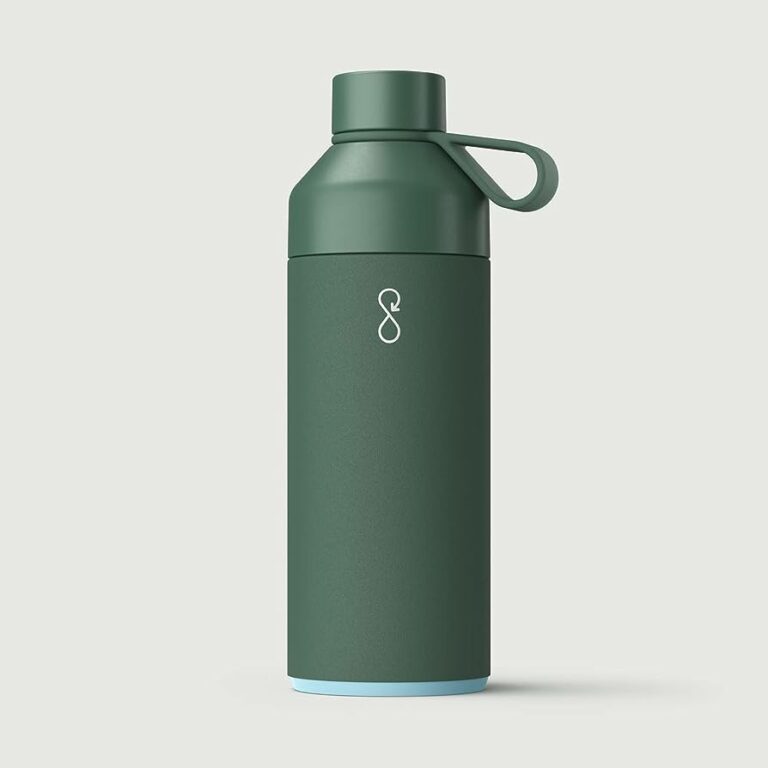Mold In Water Bottle Mouthpiece
Today we discuss Mold In Water Bottle Mouthpiece. Mold can pose health risks and affect the taste and quality of the water you drink. But don’t fret! We’ll provide you with some practical tips on how to prevent mold from growing in your water bottle mouthpiece, ensuring a clean and refreshing sip every time.
From proper cleaning techniques and regular maintenance to choosing the right water bottle materials, we’ve got you covered. So, let’s take a closer look at the causes, consequences, and solutions for mold in water bottle mouthpieces. Get ready to sip safely and confidently!
Mold in Water Bottle Mouthpiece: How to Prevent and Deal with It
Mold in water bottle mouthpieces can be a common issue that many people overlook. However, it is important to address this problem as mold can pose serious health risks if consumed. In this article, we will explore the causes of mold in water bottle mouthpieces, the potential health effects, and effective ways to prevent and address this issue.
What Causes Mold in Water Bottle Mouthpieces?
Mold thrives in moist environments, and the mouthpiece of a water bottle can provide the perfect breeding ground. The combination of warm temperatures, moisture from saliva, and residual water left behind can create an ideal environment for mold to grow. Additionally, if the bottle is not properly cleaned and dried after each use, any leftover moisture can promote mold growth.
Another common cause of mold growth in water bottle mouthpieces is inadequate airflow. If the mouthpiece is designed in a way that restricts the flow of air, it can create a damp environment that encourages mold growth. The presence of mold can also be exacerbated if the water bottle is stored in dark, humid locations, such as gym bags or backpacks.
To prevent mold in water bottle mouthpieces, it is important to clean and dry them thoroughly after each use. This will help eliminate any residual moisture and prevent the growth of mold. Additionally, storing the bottle in a well-ventilated area, away from direct sunlight, can help reduce the chances of mold formation.
The Health Risks of Mold in Water Bottle Mouthpieces:
Mold in water bottle mouthpieces can have detrimental effects on health, as mold can release spores that cause allergic reactions or respiratory issues. People who are allergic to mold may experience symptoms such as coughing, sneezing, and watery eyes. In more severe cases, mold exposure can lead to respiratory infections or trigger asthma attacks.
Furthermore, mold can also produce mycotoxins, which are toxic substances that can be harmful when ingested. When mold grows in water bottle mouthpieces, these mycotoxins can contaminate the water and be consumed along with it. Ingesting mycotoxins can lead to various health problems, including gastrointestinal issues, allergic reactions, and in rare cases, even toxicity.
It is important to address mold in water bottle mouthpieces promptly to avoid any potential health risks. Regular cleaning, drying, and inspection of the mouthpiece can help prevent the growth and proliferation of mold, ensuring the safety of your drinking water.
Preventing and Addressing Mold in Water Bottle Mouthpieces:
Prevention is the key to avoiding mold in water bottle mouthpieces. Here are some effective preventive measures:
- Thoroughly clean and dry the mouthpiece after each use.
- Regularly inspect the mouthpiece for any signs of mold growth.
- Avoid storing the water bottle in dark, humid environments.
- Store the bottle with the mouthpiece open to allow for proper airflow.
- Consider using a water bottle with a removable and washable mouthpiece for easier cleaning.
If you notice mold in your water bottle mouthpiece, it is important to address it immediately. Here are some steps to follow:
- Remove the mouthpiece from the water bottle.
- Thoroughly clean the mouthpiece with warm, soapy water.
- Use a toothbrush to scrub away any visible mold.
- Rinse the mouthpiece thoroughly to remove any soap residue.
- Allow the mouthpiece to air dry completely before reattaching it to the water bottle.
It is also a good idea to periodically inspect the rest of the water bottle for any signs of mold or residue. Regular maintenance and cleaning can help ensure the safety of your drinking water and prevent any potential health risks associated with mold.
Common Mistakes to Avoid with Water Bottle Mouthpieces:
When it comes to water bottle mouthpieces, there are a few common mistakes that people often make, which can contribute to mold growth. By being aware of these mistakes, you can take steps to avoid them and maintain a clean and mold-free mouthpiece.
Using the Same Water Bottle for Extended Periods
Using the same water bottle for an extended period without proper cleaning and maintenance can create an environment conducive to mold growth.
Over time, bacteria and mold can accumulate inside the mouthpiece, leading to potential health risks. It is important to regularly clean and inspect your water bottle mouthpiece to prevent mold formation.
Not Cleaning the Mouthpiece Thoroughly:
Simply rinsing your water bottle mouthpiece with water may not be enough to remove all the bacteria and mold. It is essential to thoroughly clean the mouthpiece with warm, soapy water and use a toothbrush to scrub away any visible mold or residue. This will help ensure the mouthpiece is free from any potential contaminants.
Storing the Water Bottle Inappropriately:
Storing your water bottle in dark, humid environments, such as gym bags or backpacks, can contribute to mold growth. It is important to store your water bottle in a well-ventilated area, away from direct sunlight, to discourage mold formation.
The Importance of Regular Cleaning and Maintenance:
Regular cleaning and maintenance are essential for a mold-free water bottle mouthpiece. By following a few simple steps and incorporating them into your routine, you can ensure the safety and cleanliness of your water bottle.
Cleaning Tips for Water Bottle Mouthpieces
Here are some helpful tips for cleaning your water bottle mouthpiece:
- Use warm, soapy water to clean the mouthpiece.
- Scrub the mouthpiece with a toothbrush to remove any mold or residue.
- Rinse the mouthpiece thoroughly to remove all soap residues.
- Allow the mouthpiece to air dry completely before reattaching it to the water bottle.
Regular Inspection
Make it a habit to regularly inspect your water bottle mouthpiece for any signs of mold or residue. By catching any potential issues early on, you can address them promptly and prevent the spread of mold. Inspecting the mouthpiece after each use or at least once a week can help ensure its cleanliness.
Replacing the Mouthpiece
If you notice persistent mold growth or have difficulty removing the mold from your water bottle mouthpiece, it may be necessary to replace it. Many water bottles have replaceable mouthpieces, which can be purchased separately. This ensures that you have a clean and mold-free mouthpiece at all times.
By following these cleaning and maintenance tips, you can enjoy fresh and clean drinking water without the worry of mold growth. Remember, prevention and regular maintenance are key to keeping your water bottle mouthpiece mold-free and your health protected.
Key Takeaways: Mold in Water Bottle Mouthpiece
- Mold can grow in the mouthpiece of your water bottle.
- To prevent mold, regularly clean and dry your water bottle.
- A toothbrush and mild soap can be used to scrub the mouthpiece.
- Inspect the mouthpiece for any visible mold and discard the bottle if necessary.
- Consider using water bottles with removable and replaceable mouthpieces for easier cleaning.
Faqs for Mold In Water Bottle Mouthpiece:
Answer:
While it may be difficult to see mold in the small crevices of your water bottle mouthpiece, there are some telltale signs to look for. Pay attention to any unusual odors, such as a musty or earthy smell, when using your water bottle.
Additionally, look for discoloration, dark spots, or a slimy texture on the surface of the mouthpiece. If you notice any of these signs, it’s likely that you have mold in your water bottle mouthpiece.
It’s important to note that mold can negatively impact your health, so if you suspect mold in your water bottle mouthpiece, it’s best to stop using it and clean it thoroughly.
Answer:
Cleaning mold from a water bottle mouthpiece is crucial to prevent any health risks. First, disassemble the mouthpiece from the bottle if possible. Rinse it with hot water to remove any visible mold or debris.
Then, prepare a mixture of one part white vinegar and one part water. Submerge the mouthpiece in the vinegar solution and let it soak for at least 30 minutes.
After soaking, scrub the mouthpiece with a small brush, like a toothbrush, to remove any remaining mold. Rinse it thoroughly with warm water to ensure all vinegar residue is gone.
Finally, air-dry the mouthpiece in a clean area before reassembling it and using it again. Regularly cleaning your water bottle mouthpiece can help prevent mold growth and ensure the safety of your drinking water.
Answer:
It’s important to establish a regular cleaning routine to prevent mold growth in your water bottle mouthpiece. Cleaning it once a week is generally sufficient for most individuals.
However, if you live in a humid environment or frequently use your water bottle, it may be wise to clean it every few days.
Remember, mold thrives in moist environments, so the more diligent you are with cleaning, the less likely it is for mold to develop in your water bottle mouthpiece.
Answer:
Yes, there are several steps you can take to prevent mold from growing in your water bottle mouthpiece. First and foremost, ensure that you thoroughly clean and dry your mouthpiece after each use, as mentioned earlier.
Storing your water bottle in a cool and dry place when not in use can also help prevent mold growth. Avoid leaving your water bottle in hot or humid environments, such as inside a car on a sunny day. Finally, if you notice any signs of mold, replace your water bottle mouthpiece promptly to prevent further contamination.
Answer:
Yes, mold in water bottle mouthpieces can pose health risks. Breathing in mold spores can trigger allergies or respiratory problems, particularly in individuals with preexisting conditions such as asthma or weakened immune systems. Ingesting mold-contaminated water may also lead to digestive issues or infections in some cases.
To ensure your health and safety, it’s important to promptly address any mold growth in your water bottle mouthpiece and clean it thoroughly. If you experience any unusual symptoms after using a mold-contaminated water bottle, consult with a healthcare professional.

Summary:
If you use a water bottle with a mouthpiece, be careful of mold growth. Mold can thrive in warm and moist environments, which is why a dirty or wet bottle can be a breeding ground. To prevent mold, make sure to clean your water bottle regularly with soap and water. Don’t forget to dry it properly too! If you notice any signs of mold, like a musty smell or black spots, it’s time to get a new bottle.


